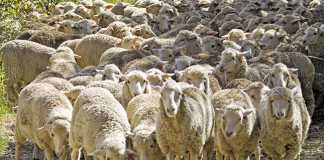The dairy industry and various government departments are hoping to join forces to introduce a school milk progamme to improve the health and learning abilities of South Africa’s children. Glenneis Erasmus reports on the challenges this initiative could face, including stiff competition from subsidised dairy-producing countries.
The dairy industry, together with the departments of Agriculture, Health and Education are evaluating the possibilities of implementing a school milk programme in South Africa.
All parties are in favour of the programme and agree that milk can significantly help to improve the health of South African children. In other countries the programme has resulted in promoting milk-drinking culture and increased per capita consumption, which has helped to increase the sustainability of dairy producers in those countries.
Face up to challenges
The programme, however, faces numerous challenges as it is obvious that government will be unable to subsidise the project, and most South Africans won’t be able to afford milk for their children. Benny Sikhakhane, deputy director of the community-based nutrition programme of the Department of Health, adds that some poor parents may also stop feeding their children at home, arguing that the children will receive the necessary nutrition at school.
He says providing children with milk at school might create expectations to also receive it at home. Parents, however, might be unemployed or extremely poor, and be unable to satisfy these desires in their children. This can cause frustration in parents and children. Sikhakhane therefore argues that any programme must be designed holistically to make milk more affordable to everybody.
However, producers will not be able to reduce profit margins to make milk more affordable to mass consumers. Prices received for milk have declined in real terms over the past 10 years with producers receiving just under R1/litre in 1996 and less than R2/litre in 2006. The consumer price for milk in the same time increased from over R3/litre to almost R5,50/litre.
William Gertenbach, head of the Institute for Animal Production of the Western Cape Department of Agriculture, says the dairy industry will have to look at other ways of reducing milk costs. He adds that many producers have taken steps to optimise production and reduce costs. This is clearly reflected by the fact that dairy production has remained relatively stable at around two billion litres per year, despite a decline in the number of dairy producers in SA (see Table 1). Most small dairies are being replaced by larger operations where production exceeds 3 000 litres/day.
Also, there are few incentives for secondary producers to become involved in this programme as it will yield almost no profits, and at the same time cause many hassles in terms of logistics, storage, packaging, administration and financing, says to Dr Hennie Kleynhans, previous managing director of Woodlands Dairy.
He says the industry together with government, schools and parents will have to design a well-structured method to administer the programme, secure payments and prevent corruption if it wants the programme to succeed.
Currently the dairy industry doesn’t supply enough milk to sustain such a programme. Nelius van Greunen, chairperson of the Milk Producers’ Organisation of South Africa, estimates that about 220 million litres of milk will be required per year to sustain the programme. This estimate is based on the assumption that five million scholars each receive 200ml of milk per day for 220 days of the year. Milk production will in effect have to be increased by 10% to meet this demand. Van Greunen is positive that the industry will be able to meet this demand.
Gertenbach points out that milk production would have to at least double to satisfy the nutritional demands of the entire South African population. He explains that production can only be expanded by around 20% per year, and this is under favourable conditions. Therefore it would take the dairy industry at least five years to be able to meet the nutritional demands of the population.
His estimate is based on the assumption that 15,3 million South Africans fall in the zero- to 14-year-old age group, 28,4 million in the 15- to 60-year-old group and 3,7 million in the above 60-year-old group. Assuming a daily milk intake of 500ml for the young, 400ml for the middle aged group and 300ml for the elderly, then the annual production required to supply this demand can be grossly estimated at around 7,343 billion litres per year. Gertenbach adds that there would be no incentive for farmers to increase milk production unless producer prices were also increased.
Training and the use of new technologies might help to increase production and farm profitability. However, the industry is suffering from a lack of research scientists and extension officers. Currently, only two research stations are fully operational in South Africa – in George and Elsenberg. These stations are understaffed and researchers are required to do research and extension work. In addition to this, it may not be possible to generalise results to other producing regions as each production area has its unique requirements.
It would also be difficult for emerging farmers to take advantage of the programme due to the high costs associated with dairy production. “It has been recognised since the 1980s that a dairy farm should have at least 85 cows to be profitable. Nobody will make a profit by milking five or 10 cows in the backyard. This makes it difficult for emerging farmers to enter the dairy industry as they need the capital to build their herd and milking parlours,” Gertenbach stresses.
Kleynhans disagrees. “Emerging farmers in the Tsitsikamma area produce over 100 000 litres of milk per year. This production can be doubled with guidance and easily be slotted into the school milk programme,” he says.
Threat from abroad
The increased demand for dairy might pose another problem. Overseas countries might produce milk cheaper than what is possible in South Africa, export their milk here and in effect destroy the local dairy industry. Therefore government will play a pivotal role in protecting the industry from subsidised products. “South African dairy farms are counted among the most efficient in the world, but we will not remain sustainable if we are not protected from large, subsidised dairy monopolies in other countries,” Van Greunen says.
Distribution is another challenge. The Western Cape and Eastern Cape are the largest production regions, accounting for 45% of production followed by KwaZulu-Natal which produces around 19%. Milk has to be transported over vast distances from coastal regions to supply fresh milk to major buyers in the central provinces. This is especially problematic in Gauteng as it’s the industrial centre of the country, generating the largest proportion of the country’s income. Gauteng also houses the second highest proportion of South Africa’s population. This problem cannot be overcome by increasing production in other provinces as most of these provinces are unsuitable for dairy production due to climatic conditions and unreliable rainfall, says Gertenbach.
The Department of Education poses that the incorporation of the milk programme into the National School Nutrition Programme would help to reduce logistic, administration and storage challenges for both programmes, according to Cynthia Mgijima from the Department of Education.
Another major challenge facing the school milk programme is what will be done with milk aimed at this project during school holidays. “A cow cannot be switched off during school holidays. Production has to continue and something needs to be done to ensure that there is a market for this milk,” Gertenbach says.
Most dairy role-players do not see hygiene and safety as a big issue as it is argued that ultra-high temperature (UHT) milk should rather be used than raw milk. UHT milk is safe to drink and does not have to be stored in cooling facilities. Role-players do, however, agree that milk needs to be served chilled as the experience of drinking lukewarm milk may backfire – instead of promoting milk, it will cause children to stop drinking it.
Many countries with school milk programmes only serve low-fat or skimmed milk at schools due to increased obesity problems across the world. Gertenbach argues that this is not necessary as milk only contains around 3,3% fat and as such can be considered a low-fat product. The full-cream product will also be better for children as it will help to promote their energy levels. Gertenbach adds that obesity is not always due to overeating, but due to unhealthy eating habits. “People need to be taught again how to eat healthy.”
For more information contact
William Gertenbach on (021) 808 5111 or
Nelius van Greunen on (044) 870 7576. |FW













